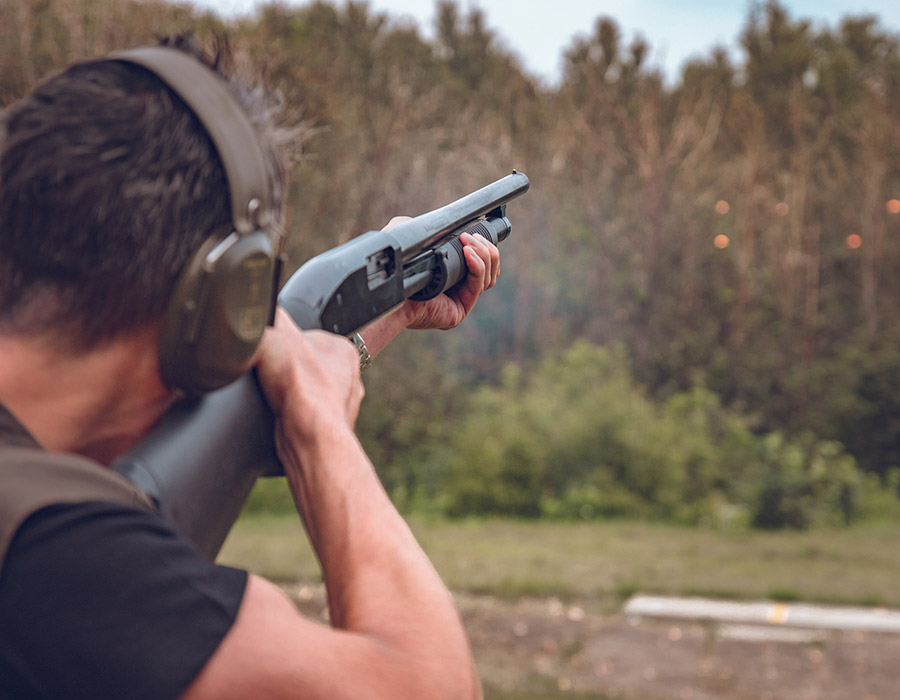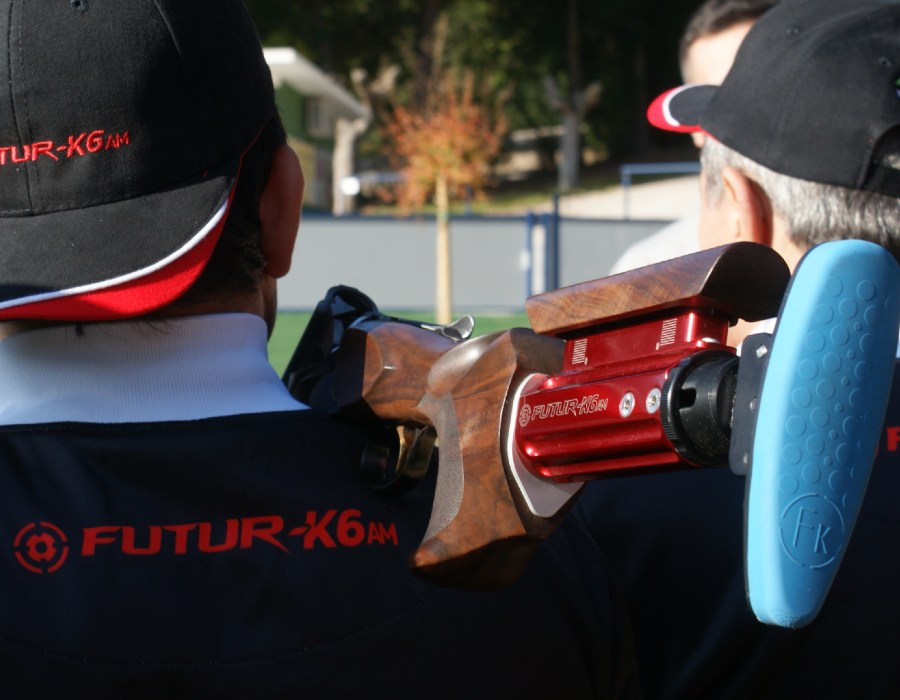What is skeet?
Clay pigeon shooting, intended as Trap, is a fascinating sport that tests many of the shooter’s skills and abilities. This activity can stimulate all the musculoskeletal parts of the body and other skills such as intellectual skills and aiming and reflexes.
However, for some shooters, having to repeat the same movements with an automatic cadence over and over again is stressful, so they prefer to dedicate themselves to the hunting course, better known as skeet.
This is another Olympic discipline in the shooting field, but it offers different stimuli thanks to the fact that the launches are made with different trajectories and, in some cases, are sometimes not obvious.
Different technical and instrumental skills are required to carry out this activity, compared to the more classic Olympic pit.
Skeet, needless to say, is the discipline most appreciated by hunters, as they can go on the platform without needing to have great knowledge of skeet shooting. Above all, they can use their own hunting shotgun, which is very suitable for this practice thanks to the fold of the stock adapted for hunting and not anticipated for shots from the platform.
In this discipline, in fact, not only do the shots take place at shorter distances, but above all, they have different angles, often sloping.
The practice of skeet
Whatever the specialty, the shooters who dedicate themselves to this discipline must still adopt a good aiming technique, because often the launches are also made imaginatively, going out of the launching parameters they are used to.
Therefore, to practice skeet professionally, you need excellent reflexes and good skills to use a shooting setting that allows you to easily adapt to the difficulties of the different launch angles. Of course, you also need good tools, that is, shotguns and ammunition. In particular, the shotgun must have characteristics that substantially differentiate it from that used for the Olympic pit.

The skeet shotgun
Considering the short distance from which the shots take place, the skeet shotgun’s barrels must be short and have a sufficiently open choke to favor the dispersion of the pattern, making it easier to break the target.
It is true that today the use of internal movable chokes allows us to be able to use one shotgun for different disciplines, but if we wanted to use a Trap shotgun for skeet, while modifying the choke, we would have two types of problems: the first concerns the length of the barrels and the second the shot setting dictated by the type of stock being used.
On the other hand, for the barrels, a good compromise can be found between ballistic performance and the result, by making the right adaptation with the Mobil Chokes used and using ammunition dedicated to the hunting course.
Those who practice the trap discipline and have fixed wooden stocks, in which the advances, deviations, and advantages are designed and set up to face and facilitate shooting on upright targets, will hardly find an adaptation to the different discipline in which the targets not only follow different trajectories but often have descending parables.
However, this is a different story for those who are lucky enough to have an adjustable wooden/aluminum stock on their shotgun, which facilitates changing the fold and advance settings, finding the right solution for skeet shooting.
After the practice session, you can then put them back in their original conditions, if necessary. Thus, after modifying the bottlenecks of the barrels and the fold and advance of the stock, you can delight in the course, a very stimulating and dynamic activity.

How to train and improve your skeet shooting
Like all sporting activities, even clay pigeon shooting in the specialty of skeet requires a good athletic preparation as well as an aptitude for the platform if you want to practice it at a good competitive level.
Those who approach the world of shooting for the first time would do well to be followed on the field by a federal instructor, or perhaps participate in one of the many organized courses to bring people closer to this sport.
But the basic techniques you learn, such as calling targets with an unloaded gun to acquire shotgun movement, target trajectory, and learning the right time to pull the trigger without having the anxiety of hitting the target, are beneficial for the growth of shooting skills and improving the glance and resistance of the physical structure, as well as improving the level of confidence with one’s shotgun, throughout all the years of shooting.
Furthermore, as a form of training, we always recommend the indoor one, that is, at home, in front of a mirror, holding the shotgun (unloaded) and collimating the pupil, rib, and viewfinder, immediately at the first embrace. This technique, facilitated when you have an adjustable stock that adapts to our physique, first of all, helps us understand if the shotgun is well balanced, then it allows us to acquire the right movement to shoulder the shotgun in the best way possible so it will immediately be aligned with the target.
The repetition of these movements, together with the simulation of the targets’ trajectories, especially the mark and pull, but also the hare, will not only increase our confidence with our shotgun, but will help your body memorize the movements to be reproduced instinctively on the platform while strengthening your arms, forearms, and upper torso, which are the parts of the body most subject to stress during practice sessions and competitions.
Today there are different degrees of cushioning on the market, especially among wood/aluminum products. If you do not have a stock that can cushion the recoil of the blows, it will also be necessary to strengthen the large pectorals and the front part of the shoulders, as they are the parts that cushion and absorb the blow and the rotation of the shotgun following detonation.
These exercises will have to alternate series after series, to put into practice what has been learned and accustom the body and mind to maintain the right rhythm and the right concentration, between a pull, mark, thrush or hare.
Have fun!

